Boom or bust: Players who could exceed or fall short of expectations
Late winter is a time for optimism, as pitchers and catchers approach their reporting dates and preseason player projections are published.
theScore reviewed several player forecasts this winter, examining the underlying skills and metrics. Who are some standouts we expect to overachieve? Who are some players we expect to fall short?
Here are the cases that stood out.
Who could underperform?
Ronald Acuña Jr.
Projection systems are bullish on the Atlanta Braves star in his return from a second ACL tear in four seasons, this time to his left knee.
FanGraphs projections foresee a 5.0 WAR season, on average, and wRC+ forecasts range between 138-159, which is in line with his career 141 wRC+ mark.
Acuña is expected to return early in the season and is already exciting the baseball social media world by sharing videos of himself smashing baseballs.
But I can't help thinking about conversations I had with the Braves and Acuña prior to the 2023 season. He was coming off a disappointing 2022 campaign in which he hit just 15 home runs after his first torn ACL.
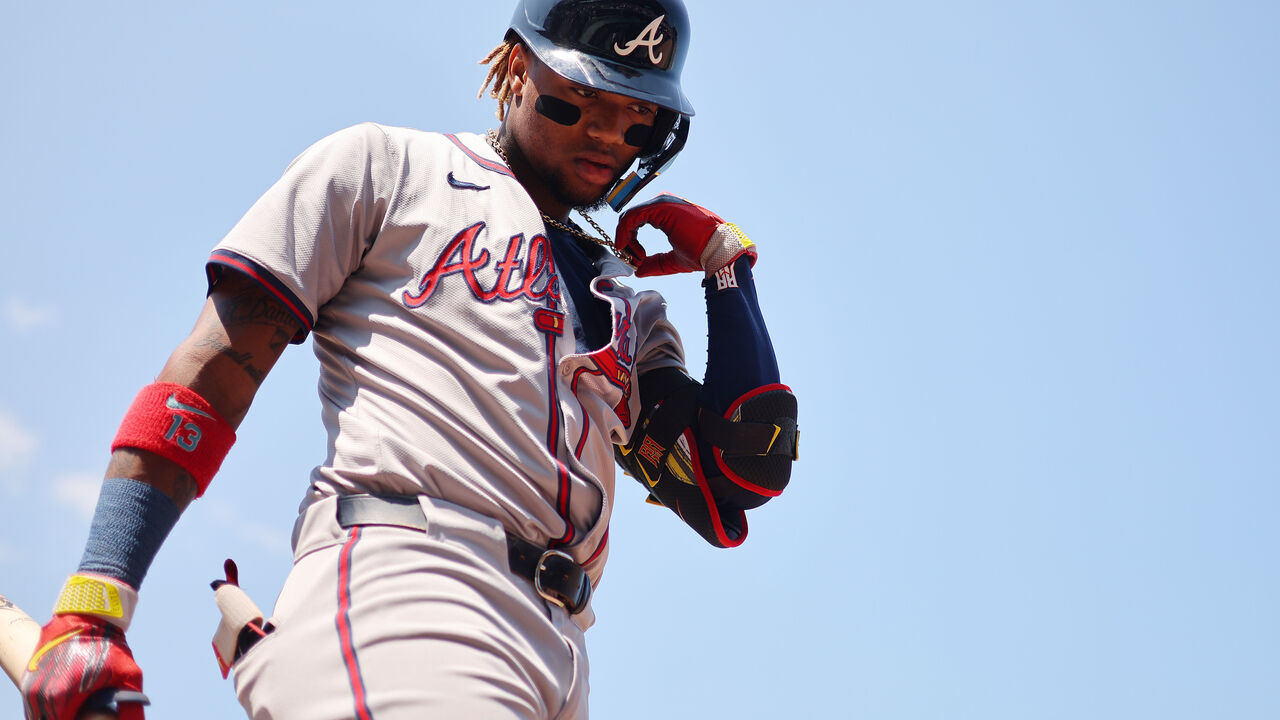
"I'd say the only difference is last year (2022), I had to battle with some pain in the knee," Acuña said via an interpreter. "It comes with recovering from that type of injury. Just being able to practice and train at 100%, without any restrictions, was (important)."
Nearly all his underlying batted-ball quality metrics declined in 2022 before rebounding in 2023 when he won the National League MVP award.
Then-Braves hitting coach Kevin Seitzer said Acuña's power was off because his lower body wasn't at 100% in 2022. Could we expect the same in 2025?
"His power, his hand speed, comes from his lower half," Seitzer said back then. "And it was his right knee, so he did not have that explosive backside that he's had that made him Ronald Acuña."
Acuña is currently rehabbing an ACL tear to the plant leg of his swing, not the drive leg. That could help him rebound more quickly. But to 100%?
We generally expect too much from players coming off major injuries. Acuña will almost certainly return to his MVP-level form, but his personal history suggests that's more likely to happen in 2026 than in 2025.
Roki Sasaki
FanGraphs projection systems tend to produce similar forecasts because they employ similar processes. They generally compare players to those in baseball history at similar ages, with similar skills and production to that point.
However, there's a great disagreement among the projection systems for Sasaki in 2025.
The Steamer system at FanGraphs has Sasaki immediately performing as one of baseball's best pitchers with 11.6 strikeouts per nine, 2.8 walks, and a 3.29 ERA over 139 innings.
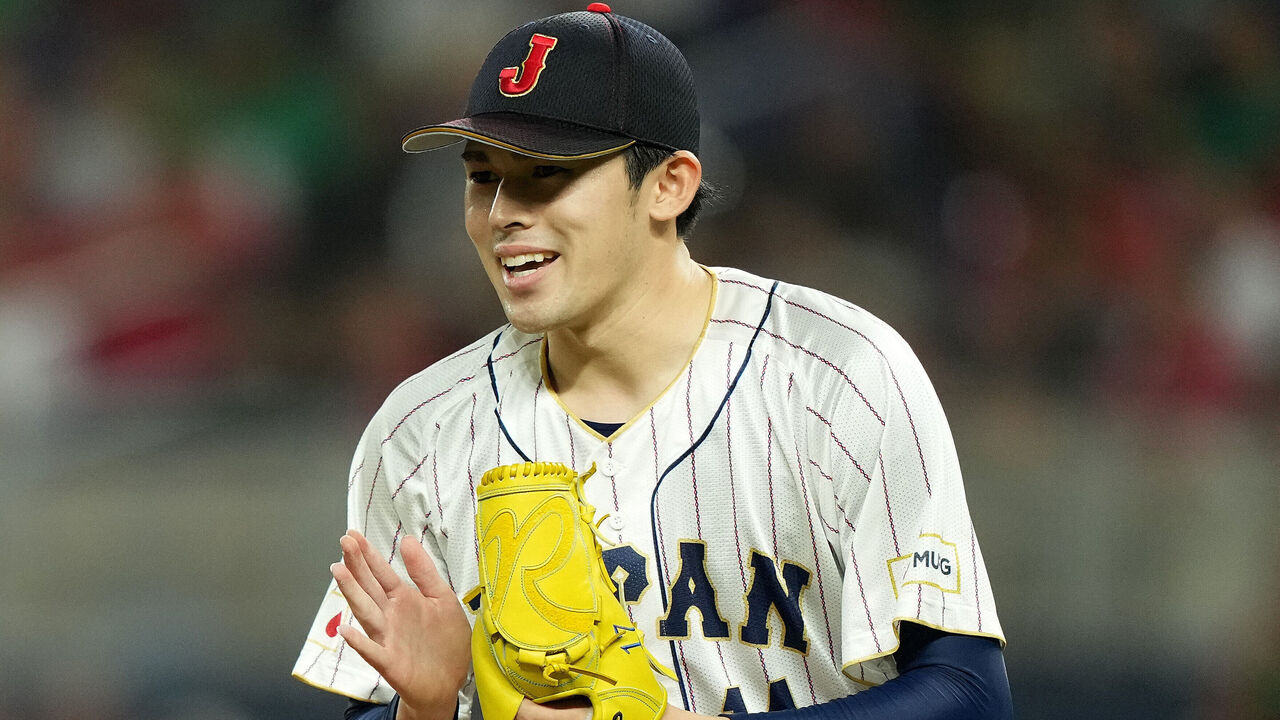
Clay Davenport's system, which is familiar with extrapolating foreign league performance to the majors, calls for 155 innings and a 2.97 ERA.
Then there are two extremely bearish forecasts at FanGraphs from OOPSY (eight strikeouts per nine, 5.55 ERA) and ZiPS (4.88 ERA on 97 innings).
Human evaluators are uniform in their praise of Sasaki's skill set, but there are concerns about the health of his arm. He's had numerous minor injuries, and Sasaki recently revealed that he contemplated having Tommy John surgery earlier in his career with the Chiba Lotte Marines.
His fastball velocity fell from 98 mph in 2023 to 96.9 last season, and his strikeout rate dipped from 39.1% to 28.7% (although his innings improved to 111 from 91).
Some of the trouble with projecting Sasaki for immediate elite, Cy Young-level performance is volume. All the projections figure him for about 24 starts, but his innings range from 97 to 139. The Dodgers - always careful in managing workloads - figure to limit his workload in 2025.
Even if his per-inning performance is elite, his counting numbers might not be. Moreover, it's also tough to forecast how an NPB pitcher will immediately adapt to the differences in the game and culture.
The variance in projections suggests plenty of performance risk in 2025, and we know the volume will likely be depressed. Sasaki will probably be a front-line ace eventually, but that's a better bet for 2026 and beyond.
Matt Olson
Only Aaron Judge and Kyle Schwarber have homered more than Olson since his first full season in 2018. He's been one of the game's premier sluggers and has capably filled Freddie Freeman's shoes in Atlanta.
Most projections believe Olson will rebound after he followed up a career-high 54 homers (161 wRC+) in 2023 with 29 (117 wRC+) in 2024. The average at FanGraphs calls for 34 homers and a 126 wRC+.
But there's a troubling trend developing with Olson, who's entering his age-31 season.
He averaged a 94.4-mph exit velocity in the first half of 2023, with a maximum of 118.6 mph April 11.
That fell off to a 93.1-mph average in the second half, with a 113.1 maximum.
He saw even further decline in the first half of last season, averaging 92.9 mph (113.9 mph max). Olson then averaged just 91.7 mph in the second half, with a 111.9 max.
Exit velocity isn't everything, but it's a key in determining power. It also declines with age.
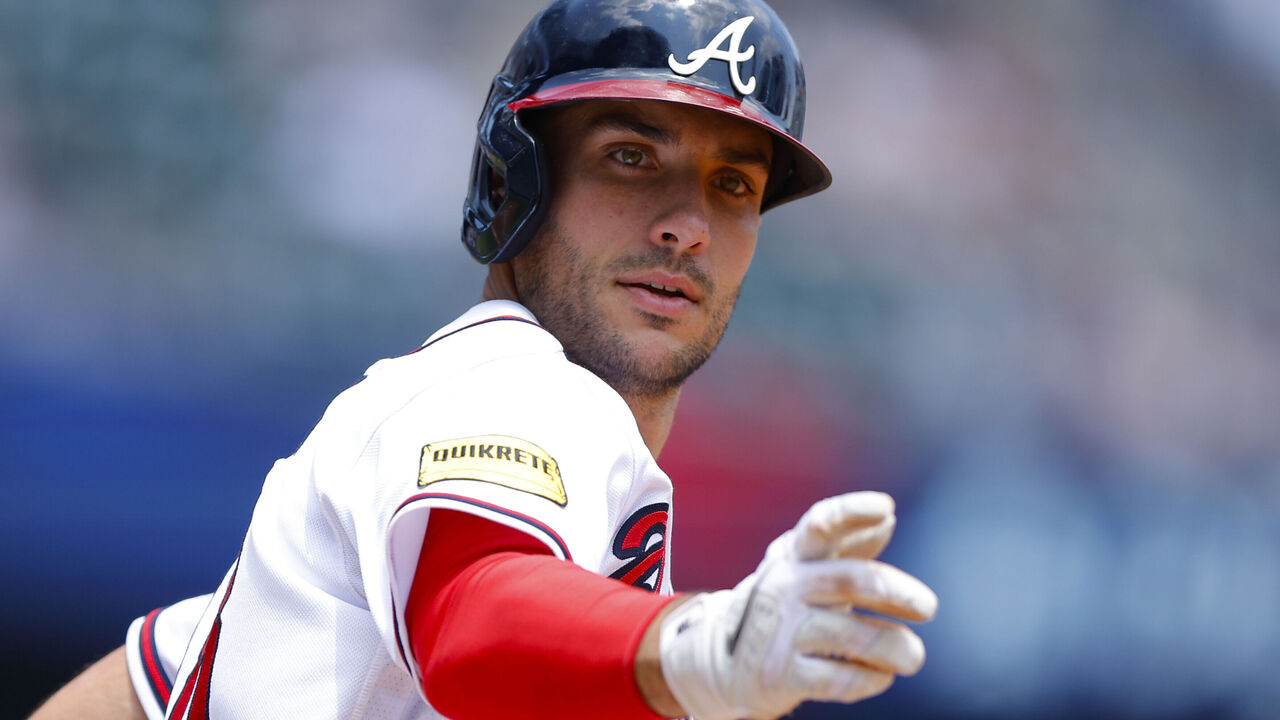
Olson shouldn't be in steep decline yet, but he's entering the age range when talent begins to descend.
Anthony Rizzo had a similar exit-velocity decline two years ago, and it remained depressed last season. His wRC+ fell from 131 in his age-32 campaign in 2022, to 97 in 2023, to 84 last season.
It seems possible Olson's best baseball is behind him.
Cody Bellinger
New York looks like a great spot for Bellinger. Yankee Stadium is a dream ballpark for left-handed pull hitters like him, as he ranked eighth out of 550 batters last season in the number of pulled fly balls. But let's consider his skills.
Among batters who took at least 100 swings last season, Bellinger had the sixth-biggest decline in Statcast's bat speed measurement from the first half to the second, falling well below the MLB average (68 mph).
His maximum exit velocity dropped 3.9 mph to 105 mph in the second half, the 11th-biggest decline. He hit the ball as weakly as Steven Kwan and Nico Hoerner.
It's possible Bellinger was trying to trade power to increase contact. But hitting increasingly weak fly balls in the air doesn't pay. His exit velocities have tumbled since his outlier 2019 MVP campaign, and 2024 marked a new low for batted-ball quality.
Bellinger's overall production has nowhere to go but down if his underlying skills continue to decline.
Yankee Stadium can mask his deficiencies in the short term, but this is a player teetering near a performance cliff.
Who could overperform?
Jacob deGrom
Calling for a pitcher who hasn't surpassed 100 innings since 2019 to exceed expectations seems highly contrary.
Despite averaging just 53 innings over the last five years, FanGraphs forecasts have deGrom averaging 111 this season across a range from 51 to 152. Davenport's forecast has him at 120 innings.
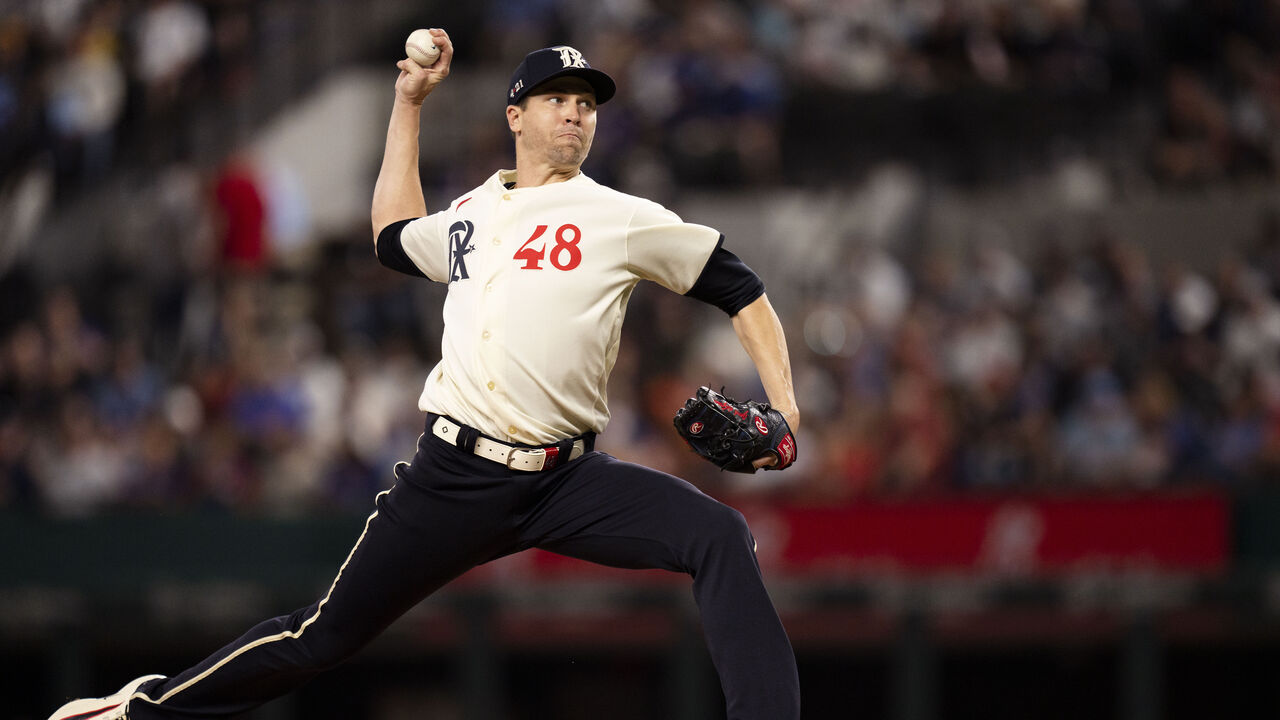
Like Sasaki, deGrom is one of the most polarizing players for 2025, according to both computer and human evaluators.
But I am bullish on deGrom for 2025. Why? Because his elbow wasn't quite right for years. He pitched through multiple elbow-related maladies and finally had a second Tommy John procedure in June 2023.
He's now in what some refer to as the Tommy John honeymoon period.
Pitchers' elbows are generally not at severe risk for re-injury for multiple years following the surgery. He'll be nearly two years removed from the surgery on Opening Day. When deGrom returned last September, he looked very much like himself. He struck out 14 and walked just one in 10 2/3 innings, averaging 98 mph with his fastball.
After his first Tommy John surgery in 2010, deGrom reached the majors, averaged 184 innings during the first six years of his career, and won two NL Cy Young Awards.
No one is expecting another run like that, but deGrom with a healthy, reconstructed elbow might remind us how great he is and tip the balance of power in the AL West.
Oneil Cruz
There's no greater player development project than Cruz.
He's the ultimate package of physical tools. His raw power is rivaled only by Ohtani, Aaron Judge, and Stanton, his throwing arm equals Elly De La Cruz's, and his sprint speed compares to some of the game's fastest players.
There are tools, but then there's using them to their full potential.
Cruz has been a frustratingly uneven performer over his first 244 games in the majors.
He was so inconsistent at shortstop last season that the club moved him to center field, a position he'd never played as a professional.
Easing his defensive burden a bit may have helped unlock the growth he enjoyed at the plate in the second half of the campaign.
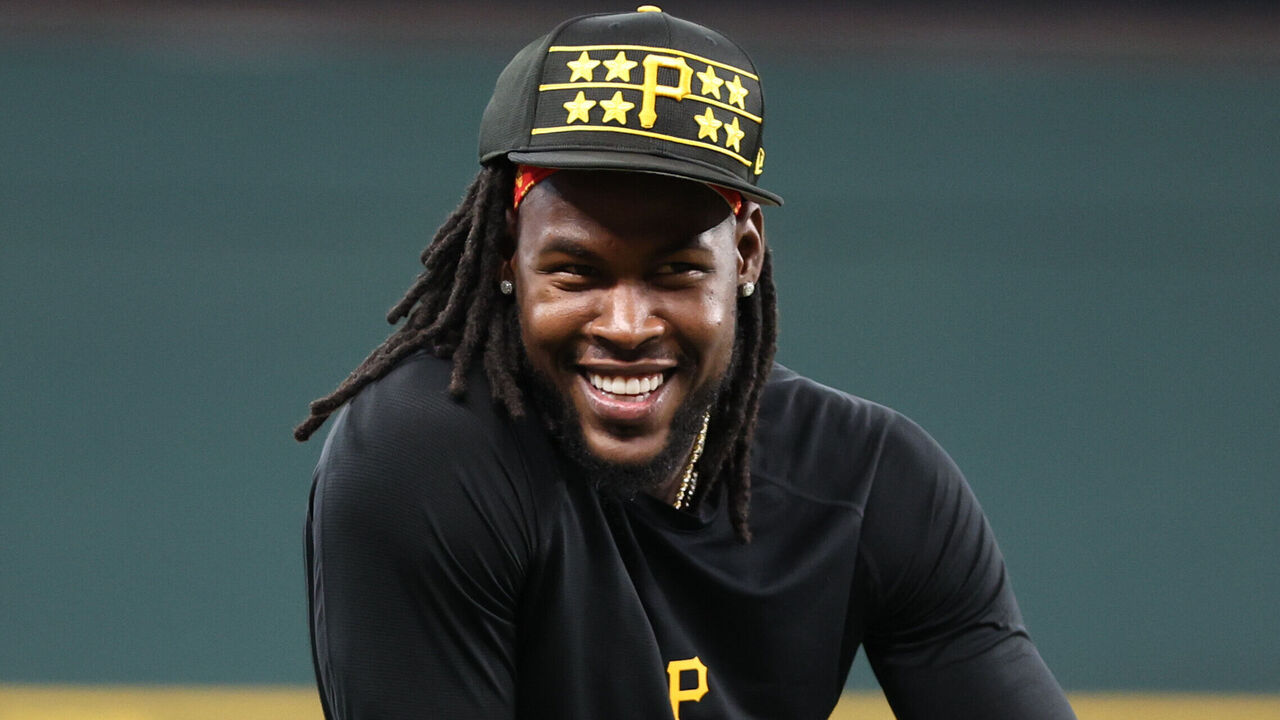
Cruz slashed .277/.357/.464 in the second half with a 125 wRC+. He cut his strikeout rate to 27% from the low 30s, where it'd hovered for his career. Only Stanton swung his bat faster, on average, than Cruz (78.9 mph average).
In fact, Cruz gained nearly 1 mph of bat speed in the second half. Getting further removed from the ankle surgery that cost him most of the 2023 season may have also played a role. Cruz stole 15 bases in the second half without being caught as well. There's a 30-30 ceiling here.
Plus, Cruz slashed .328/.370/.630 against lefties in the second half after being at risk of becoming a platoon player due to his struggles against them early in his career.
Projections are skeptical Cruz will become a superstar in 2025, but projections, by nature, don't call for extreme breakouts. Paul Skenes needs another superstar to emerge in Pittsburgh. Here's a bet that'll be Cruz.
Spencer Schwellenbach
Just a few years after Spencer Strider materialized from nowhere to become a top-of-the-rotation force, another unheralded Spencer arrived last year to fortify the Braves' rotation.
The average K-BB% rate was 14.4% last season. Schwellenbach's 23 K-BB% mark in the second half ranked ninth among qualifying starting pitchers and was up six percentage points from the first half of his rookie season.
There's a fairly strong relationship between second-half performance and next-season production for pitchers, more so than for batters. We should pay attention to late-season pitching breakouts.
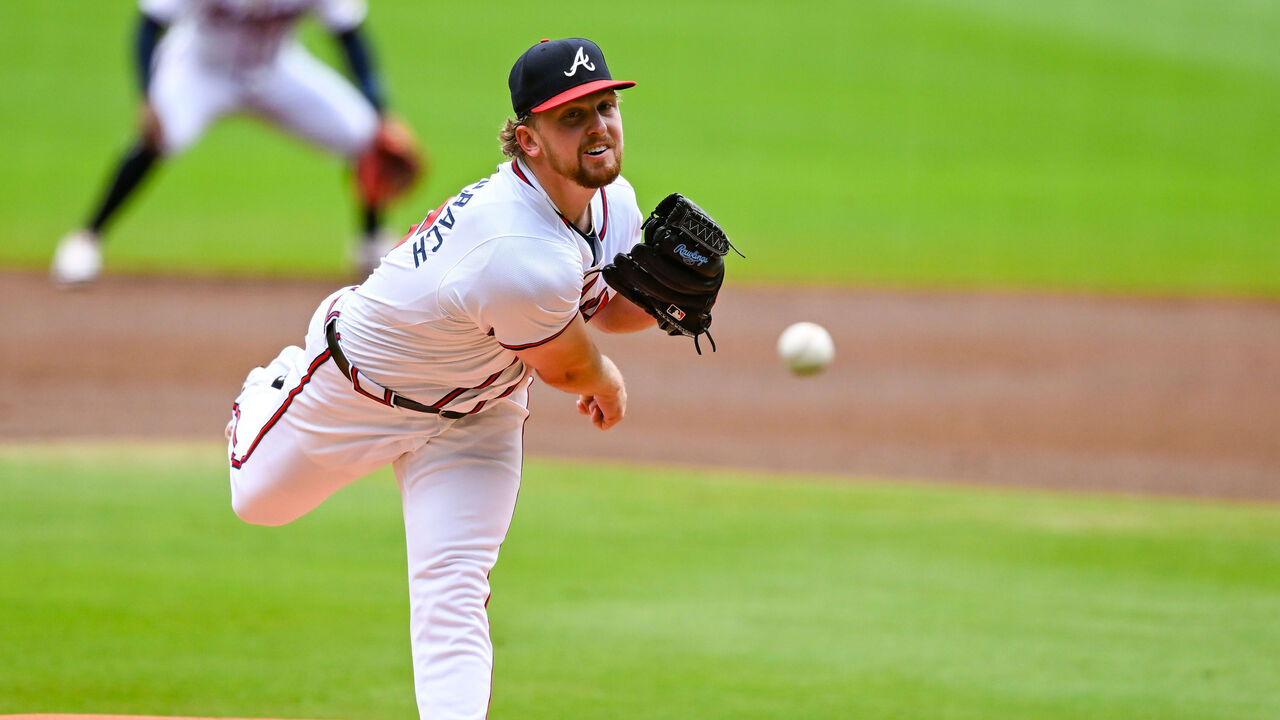
The 2021 second-rounder out of Nebraska has been a strike-thrower throughout his career, he owns above-average velocity, and, most of all, he enjoys a varied pitch arsenal. Schwellenbach throws six pitches, and five of them graded as above average last season. He keeps batters guessing by throwing five of his pitches at least 13% of the time (topping out with his four-seam fastball at 29%).
The righty also built up volume last year, throwing 167 innings between the minors and majors. With health, Schwellenbach has the skills and volume to finish in the top 10 in NL Cy Young voting.
Max Scherzer
It might seem odd to see a 40-year-old pitcher coming off an injury-plagued season here, but expectations are so muted for Scherzer that he seems like a good bet to beat them.
Scherzer should be stronger and healthier another year removed from back surgery. Reports from his scouting pro day were encouraging before the Blue Jays signed him.
Even in his disappointing 2024 season, he was still an above-average pitcher on a per-inning basis (3.95 ERA and a 17 K-BB%). He posted his best Command+ grade in five years.
Projections have Scherzer finishing as a 2.0 WAR pitcher in 2025, with a K-BB% approaching 20% - well above average. He's unlikely to return to ace form, but perhaps the Blue Jays landed a quality No. 3 option on a reasonable one-year deal.
The history of great pitchers suggests Scherzer should have another year or two of gas left in the tank. For Toronto, it's worth paying for to find out.
Travis Sawchik is theScore's senior baseball writer.